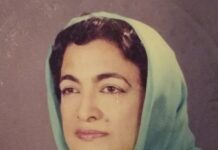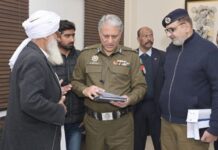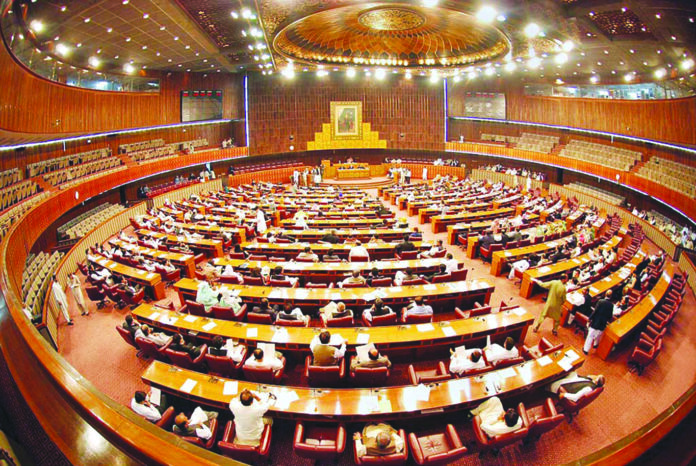AT PENPOINT
The process which started with the February 8 elections is reaching its natural conclusion, which is the formation of new governments, but the process which started with the May attacks has not yet ended, for even though the PTI won the largest number of seats in the National Assembly and the Punjab Assembly, it was unable to form governments there.
That was the first time that the largest party in the House did not form the government. Ominously, there is one example, 1970. Then too the largest party to emerge in the National Assembly, the Awami League, did not form the government, and the House never met as one. Instead, two Houses met in 1972 for two different countries, and in each, the largest party formed the government.
There is no compulsion for the largest party to form the government. However, that has been the practice since 1988. That was also the first time that the sacked government went into opposition. It was also the only occasion when the ousted PM did not attempt to form the government. An attempt was made to make the ousted PML, now in its IJI avatar, the centrepiece of an anti-PPP coalition, but that attempt was not spearheaded by the ousted PM, Muhammad Khan Junejo, but Mian Nawaz Sharif.
After that, there was never an attempt by the party coming second to form the government, even though it was theoretically possible each time except 1997, when the PML(N) won an absolute majority.
However, the Musharraf Martial Law then intervened, and the 2002 election led to a situation where no one had got a majority, including the PML(Q), which was the largest party. To help it out, a PPP (Patriots) Group came into being, and gave it the requisite majority. The Patriots also escaped the anti-defection clause of the Constitution, and the recent interpretation, that members would be unseated if they disobeyed the party whip as determined by the parliamentary leader, was not applied. The PPP Patriots’ separate existence is officially shown in the National Assembly’s records.
The PPP was the largest party in the post-2008 Assembly, and while initially it came to office as part of a coalition with the PML(N), the latter soon departed, and it inducted both the MQM and the PML(Q) to ensure its majority. Similarly, in 2013 the PML(N) and in 2018, the PTI were the largest parties, but it was at least theoretically possible for all the rest to gang up and form the government. That, as a matter of fact, is how the PTI was ousted, and the PDM coalition formed.
That situation seems to have been repeated; as the PTI is the largest party, but everyone else is combining against it. Just as its government was the first ever to be ousted by a no-confidence vote, it is also the first to emerge as the largest party in the National Assembly, but not form the government. It seems clear that it has not been forgiven for the May 9 incidents.
Out-of-the-box solutions may well be required, but that does not mean that there must be a refusal to implement solutions that have long been propounded. There are many things which have to be done; a PML(N) government may have to be business-friendly, but that does not mean having to act as a lobbyist for the business community.
Imran Khan should learn from the example of Mian Nawaz Sharif. Even though his party is back in office, he is not. While the PML(N) provides the numbers for a government, Mian Nawaz remains cast out. In the same way, it might be remembered, Imran provided the numbers for a government that looked favourably upon the establishment. His antipathy is not based on any principle, but on the fact that it is not on his side. His objection is not to the establishment having a role in politics, but to its not favouring him. He does not want neutrality, but support. To be fair to him, that is how all politicians, including those opposing him, feel.
One of the problems with present governments is the generational change. The provinces are showing not just a new generation, but children in place of parents. Punjab has Maryam Nawaz for CM. She is 50, and she is also the daughter of a former Prime Minister. Sindh CM Murad Ali Shah is 61, having first become CM in 2016, when 53. He is the son of a former CM, Abdullah Shah having held the office in 1993 to 1996, duringBenazir Bhutto’s second stint as PM. Ali Amin Gandapur, named to be CM KP by the PTI, is 45, and though the second Gandapur to hold the office, is no close relation of Inayatullah Gandapur, who is merely a fellow tribesman. True, Ali Amin’s father was a former provincial minister, but Ali Amin owes his position to his having been steadfast after May 9.
The elections threw up a split mandate, which could even be called a fractured mandate. There have been doubts cast on the results, with the PTI claiming it did better than the results said it did. However, there seem to have been two factors at work. First, there is no smoking gun. The Commissioner Rawalpindi claimed that the results of his division were falsified, but when the Election Commission of Pakistan probed the matter, he resiled from his statement and deposed to the ECP committee that he had made the statement on the prompting of a political party leader who was a proclaimed offender. In short, the PTI. After his statement, nobody was interested in corroborating his original statement.
Perhaps more importantly, “the king (in this case, the President) must be served.” The President is head of state, and must have a head of government. That can only be provided by the National Assembly. It is unthinkable that the National Assembly would fail to produce a majority for someone, to the extent that in the election for PM, if there is no majority in the first round, other rounds take place until someone emerges with a working majority.
However, matters are unlikely to go so far. The Speakers of the Punjab and Sindh Assemblies have been elected by what would be a handy majority in Punjab, an overwhelming one in Sindh, if they are repeated for the CMs. The same is expected to happen in Balochistan and the National Assembly. The only question there is whether the PPP will vote at all, for it seems firm on its decision to stay out of the government.
At the end of the day, the decision by Mian Shehbaz to take on the PM’s job reflects more confidence in himself than any ambition. Mian Nawaz’s reluctance to take the job reflects not just reservations on the part of powerful quarters as much as a recognition that he cannot transform the economy, and his trenchant criticism of the PTI on this count could well rebound on him. Further, he has been left carrying the baggage of Ishaq Dar’s latest tenure as Finance Minister. He might agree with Senator Dar that the economic mess was caused by the PTI, but he cannot but recognize that Senator Dar as Finance Minister could not achieve much, with the result that the PML(N)’s reputation as being good for the economy is in shreds.
There seems to be a recognition by all concerned that it is no longer possible to continue as before. Hopefully, this should lead to better governance. At the same time, it could lead to an abandoning of both the caution and the realism necessary to handle such a crisis. Desperate times do indeed call for desperate measures, but that does not mean licence to be irresponsible.
Out-of-the-box solutions may well be required, but that does not mean that there must be a refusal to implement solutions that have long been propounded. There are many things which have to be done; a PML(N) government may have to be business-friendly, but that does not mean having to act as a lobbyist for the business community.























